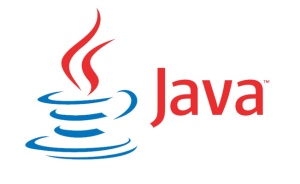JavaFX 2.0 arrives and heads for open source

Oracle has released JavaFX 2.0, the biggest revamp of the development platform in years, and outlined plans to make it open source.

Oracle has released JavaFX 2.0 and outlined plans to make it open source, as well laying out its roadmap for Java SE 8 and ME.
The update will allow developers to create rich internet apps using Java alone, the company said in announcing the release on Tuesday at the JavaOne 2011 conference. Using Java for both the server and client side of applications will make building them easier, it noted.
"Oracle has redefined JavaFX to focus on data-driven business applications that are commonly deployed in enterprise environments," Nandini Ramani, Java Client Group development chief, said in a statement.
"With version 2 of JavaFX, customers and partners can leverage their existing knowledge of and investments in Java technologies and easily create modern, expressive graphical user interfaces and data visualisations," he added.
JavaFX was introduced in 2008 by Sun to meet the growing demand for rich internet applications. It also hoped to attract developers with JavaFX Script, a simpler alternative to Java. However, after buying Sun last year, Oracle discontinued JavaFX Script.
At the event, Oracle also announced plans to make the JavaFX platform open source. It has submitted a proposal to the OpenJDK Community, and its first contribution will include the JavaFX user interface controls and related libraries. "Other JavaFX components are planned to follow in multiple phases," the company said.
JavaFX 2.0 includes a web component based on the WebKit rendering engine, as used by the Chrome and Safari browsers. This will let developers mix and match native Java capabilities and the dynamic capabilities of web technologies, Oracle said.
According to Ramani, JavaFX 2.0 was "designed from the ground up to be compatible with all the latest features and functionality of the Java Development Kit (JDK), including features coming in JDK 8 such as modularity and closures".
The update introduces a new XML-based markup language called FXML, which is aimed at defining user interfaces. Other scripting languages, such as Groovy, JRuby and Scala, can also be used to write apps in JavaFX 2.0, as can the Java development tools NetBeans and Eclipse.
JavaFX 2 supporting acts
Alongside the update, Oracle kicked off a "private early-access programme" for JavaFX Scene Builder, a visual layout tool that will let developers drag and drop UI components from a palette onto a scene. A public beta for Scene Builder is scheduled to appear in early 2012.
In addition, technology previews of both JavaFX 2.0 and Java Standard Edition (SE) 7 have been released for Mac OS X. Oracle said it will make Java SE 7 on Mac OS X available to developers in the second quarter of 2012, with a consumer version following later the same year.
The OpenJDK Community, which hosts the development of Java SE 7 and JDK 8, the prototype reference implementation of the upcoming Java SE 8, now counts Twitter as a member. This means Twitter engineers can contribute improvements to the HotSpot Java Virtual Machine (JVM) to OpenJDK.
Oracle is in the process of merging the HotSpot JVM with the JRockit JVM, and JDK 7 contains the first version of this converged JVM.
Version 7.1 of the NetBeans Integrated Development Environment (IDE) is now available in beta. NetBeans IDE 7.1 lets developers compile, debug and profile JavaFX 2.0 apps, and is the first version of the IDE to support the latest Java specifications and standards. The beta is available for Windows, Mac, Linux and Solaris.
Java SE and ME roadmaps
At JavaOne, Oracle put out a new roadmap for Java SE 8, saying it will arrive in the summer of 2013. The new version of Java SE is intended to make better use of multi-core CPUs, while bringing in JavaFX 3.0 and incorporating UI methods such as multitouch.
Java SE 8 is expected to include a Java-native module system, currently codenamed 'Jigsaw'. This aims to "simplify the construction, packaging and deployment of applications, and also enable a fully-modular Java platform which allows customised deployments on servers, clients and embedded systems", Oracle said.
Rounding out the plethora of announcements, Oracle laid out its roadmap for the mobile-focused Micro Edition (ME) of the Java platform. In the coming months, it plans to submit new Java Specification Requests (JSRs) for Java ME 7 to the Java Community Process (JCP), and begin development within that process.
"The first component planned for submission is an update to the Connected Limited Device Configuration (CLDC) virtual machine and library specifications to enable better alignment with Java Development Kit 7," the company said.
Java ME 7 will allow developers to "deliver a smartphone experience on featurephones", it added. New APIs will arrive with Java ME 7, making it possible to "turn billions of connected embedded devices into application platforms" it said.
"We are very excited about the future of Java ME, which will further extend the world's leading application platform for mobile and edge devices and offer increased opportunity for both Java developers and mobile operators," Adam Messinger, head of Oracle Fusion Middleware, said in a statement.
Messinger added that future platform extensions will let operators push "critical applications and services" straight to their customers' mobile devices.
Get the latest technology news and analysis, blogs and reviews delivered directly to your inbox with ZDNet UK's newsletters.